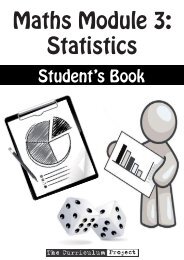Student's Book â Dec 2009 (5.9mb) - The Curriculum Project
Student's Book â Dec 2009 (5.9mb) - The Curriculum Project
Student's Book â Dec 2009 (5.9mb) - The Curriculum Project
Create successful ePaper yourself
Turn your PDF publications into a flip-book with our unique Google optimized e-Paper software.
Europeans first came to Southeast Asia in the sixteenth century, mostly for trade. Missionariesalso joined the ships as they hoped to spread Christianity in the region.• In 1511, Portugal conquered the Sultanate of Malacca and so became the first Europeanpower to establish a strong presence in the profitable Southeast Asia trade route.• <strong>The</strong> Netherlands and Spain followed and soon became the main European powers in theregion.• <strong>The</strong> Dutch took over Malacca from the Portuguese in 1641.• Spain began to colonise the Philippines (named after Phillip II of Spain) in the 1560s.• Acting through the Dutch East India Company, the Dutch established the city of Batavia(now Jakarta) as a base for trading and expansion into the other parts of Java and thesurrounding territory.• Britain (the British East India Company), came relatively late. Starting with Penang,in Malaysia, the British began to expand their Southeast Asian empire. <strong>The</strong>y alsotemporarily controlled Dutch territories. In 1819, Stamford Raffles established Singapore.It was a very important trading post for Britain in order to compete with the Dutch.By 1913:• <strong>The</strong> British occupied Myanmar, Malaya and the Borneo territories• <strong>The</strong> French controlled Indochina (Vietnam, Cambodia and Laos)• <strong>The</strong> Dutch ruled the Dutch East Indies (Indonesia)• <strong>The</strong> USA captured the Philippines from Spain• Portugal still managed to hold onto Portuguese Timor (East Timor)During the period of New Imperialism, nearly all Southeast Asian territories were conquered bythe colonial powers. Only Thailand escaped foreign rule, although it was greatly affected by thepower politics of the western colonisers.<strong>The</strong> JapaneseDuring World War Two, the military leadersof Japan wanted Southeast Asia’s rich naturalresources. Within six months, the Japanesetook over all of Southeast Asia. At first, manypeople in Southeast Asia welcomed Japaneserule – they believed the Japanese slogan ‘Asiafor the Asians’. <strong>The</strong>y thought the Japanesewould be better for Southeast Asian people. Butunfortunately the Japanese were as bad as theEuropean colonisers.When Japan surrendered in 1945, the peoplein Southeast Asia did not want to returnto colonialism. Some countries achievedindependence with little fighting. Other countriesfought many long, hard battles for independence.44



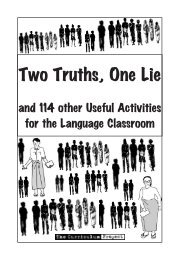
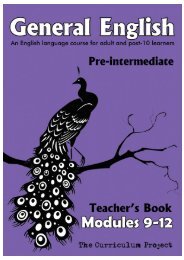



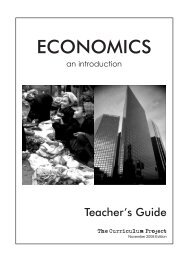
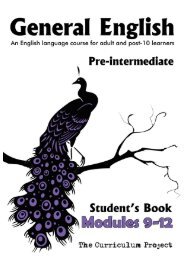



![[Eng] Nov 2012 DRAFT - The Curriculum Project](https://img.yumpu.com/45590859/1/184x260/eng-nov-2012-draft-the-curriculum-project.jpg?quality=85)


